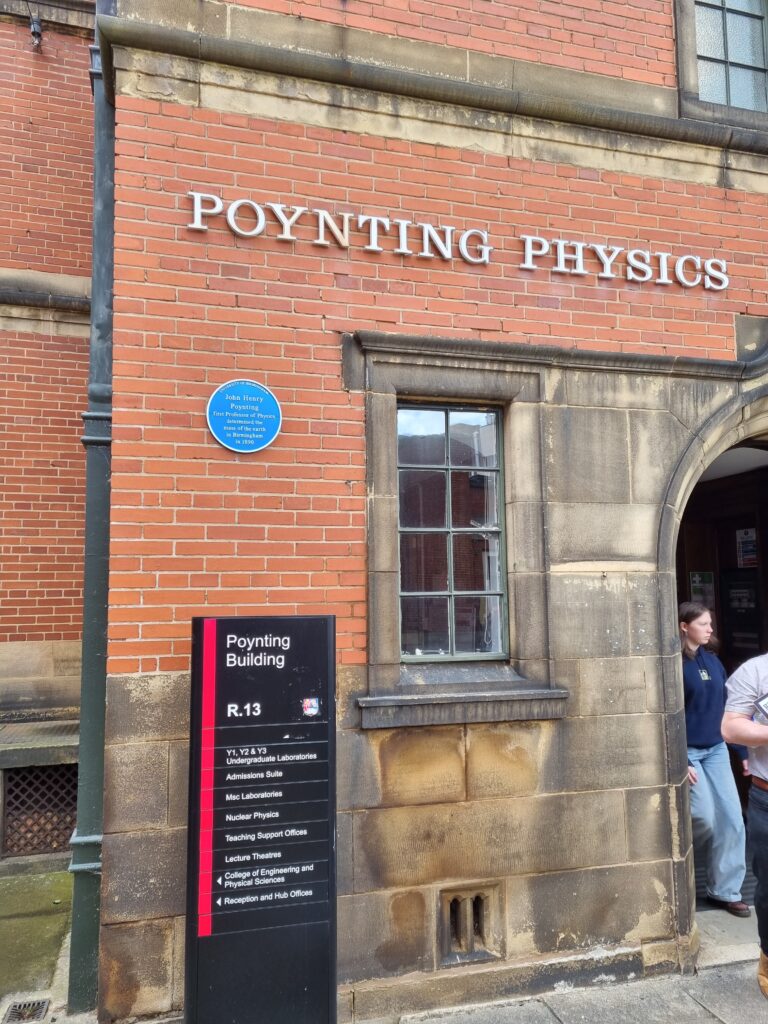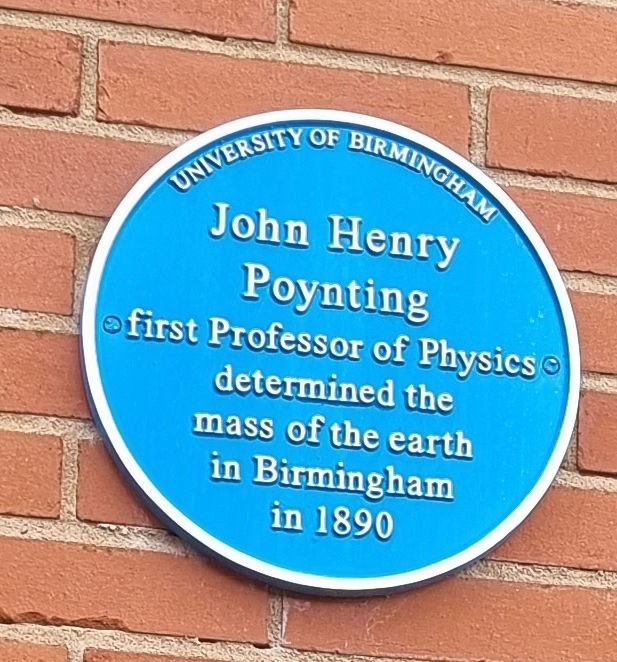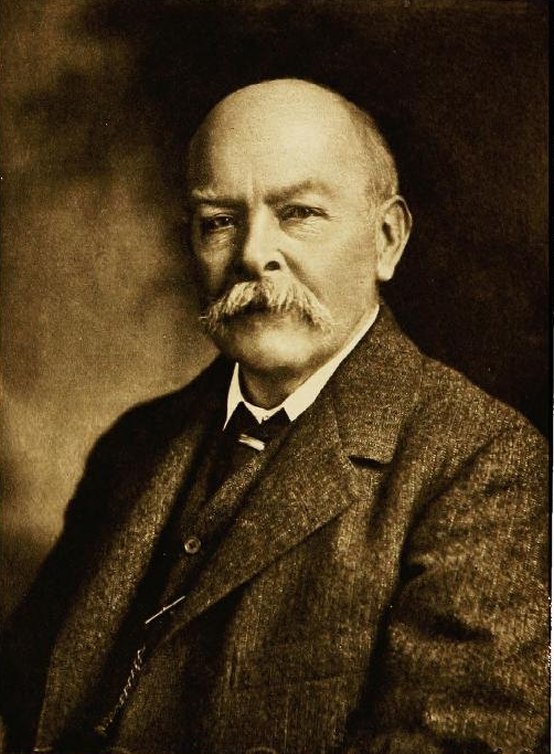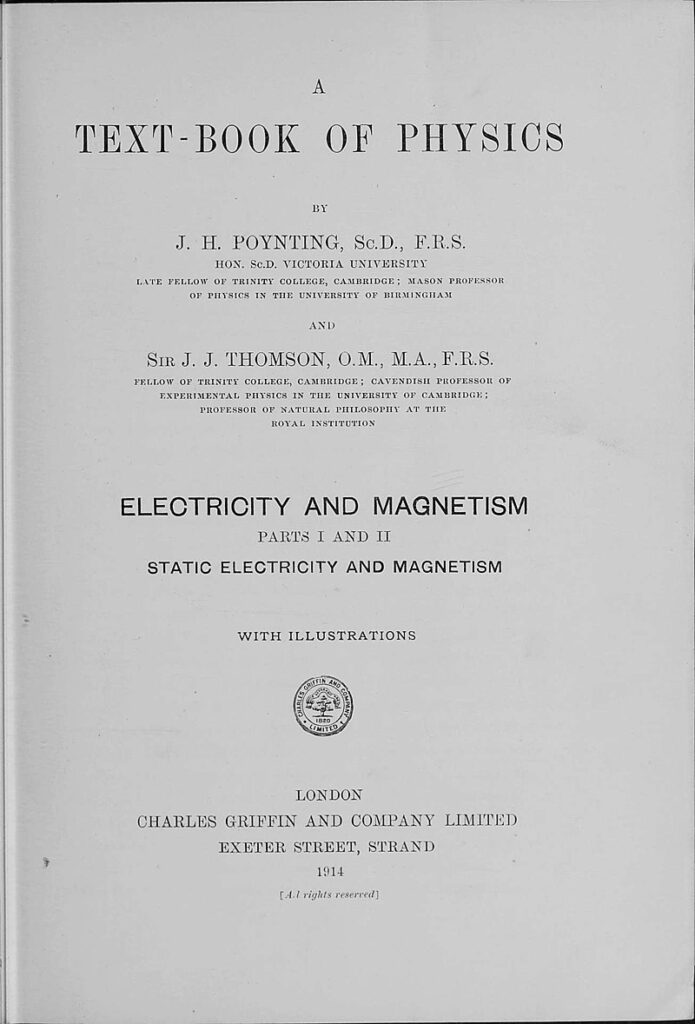During a recent visit to Birmingham University, I spotted a blue plaque commemorating physicist John Henry Poynting.

Zooming in on the blue plaque, we see that Dr Poynting is celebrated on this building for having measured the mass of the earth.

You can’t put the earth on a set of scales, but you can use precision balances to measure the gravitational effect of objects on each other, and use that to calculate the mean density of the earth. From that, you can calculate the mass. Poynting spent 12 years at Cambridge and then at Birmingham carrying out these experiments. Although that is what the blue plaque records, it is some of his other work which resulted in his name being being well known to physicists.
Dr Poynting was the first Professor of Physics at Birmingam University, when it was formed under that name in 1900. He had been heavily involved with the university’s formation, having been a professor at the Mason Science College, effectively a predecessor organisation before Queen Victoria issued the Royal Charter to Birmingham University in March 1900.

Poynting had worked at the Cavendish Laboratory, Cambridge under James Clerk Maxwell, one of my scientific heroes. After Maxwell died, Poynting was one of a group of physicists who collaborated to rework Maxwell’s equations of electromagnetism into their familiar form.
Professor Poynting developed an expression for an entity familar to all physicists which is known as the Poynting Vector. This, as its name suggests, is mathematically a vector (i.e. it has a direction as well as a size). It is the magnitude and direction of the energy flow in an electromagnetic field or electromagnetic wave. Electromagnetic waves include light of all colours and wavelengths, radio waves, infra-red light, ultra-violet light, X-rays, and some forms of radioactivity.
S = E x H
Poynting Vector S in terms of electric field E and magnetic field strength H. “x” denotes the vector “cross” product
In an EM wave, the electric field and magnetic field are at right angles to each other and the energy flow (the Poynting Vector) is at right angles to both of these. Poynting established also that electromagnetic waves, including light, exert a pressure on a surface they hit, and the greatest pressure is to be found in the direction of the Poynting Vector.
Poynting’s life and work brought him into contact with many of the other most famous physicists of his time. I have mentioned Maxwell above. After leaving Cambridge, Poynting spent some time teaching at what would become Manchester University. One of his students was JJ Thomson, later famous for discovering the electron. One of my own most inspirational teachers encouraged his classes to refer to Thomson as JJT as if we all knew him personally!
Dr Poynting and JJT collaborated on a physics text book which was still in print half a century later. This book was rather modestly entitled “A Text Book of Physics”, but was in very widespread use in Physics teaching.

Although non-Physicists may not have heard of Professor Poynting, his work on electromagnetism and EM waves amongst other subjects was a hugely important contribution to knowledge in the latter part of the 19th Century and the early part of the 20th.